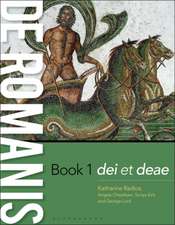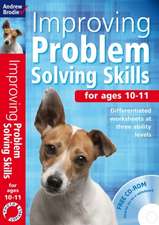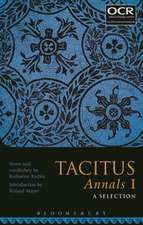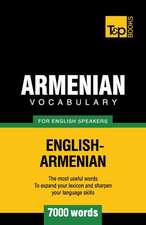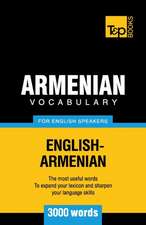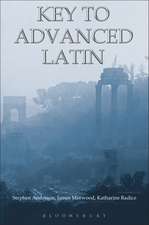de Romanis Book 2: homines
Autor Katharine Radice, Angela Cheetham, Dr Sonya Kirk, George Lorden Limba Engleză Paperback – 15 apr 2020
Preț: 146.06 lei
Preț vechi: 179.56 lei
-19% Nou
Puncte Express: 219
Preț estimativ în valută:
27.95€ • 29.89$ • 23.30£
27.95€ • 29.89$ • 23.30£
Carte disponibilă
Livrare economică 28 martie-11 aprilie
Livrare express 13-19 martie pentru 80.12 lei
Preluare comenzi: 021 569.72.76
Specificații
ISBN-13: 9781350100077
ISBN-10: 1350100072
Pagini: 288
Ilustrații: 78 colour and bw illus
Dimensiuni: 210 x 270 x 18 mm
Greutate: 0.95 kg
Editura: Bloomsbury Publishing
Colecția Bloomsbury Academic
Locul publicării:London, United Kingdom
ISBN-10: 1350100072
Pagini: 288
Ilustrații: 78 colour and bw illus
Dimensiuni: 210 x 270 x 18 mm
Greutate: 0.95 kg
Editura: Bloomsbury Publishing
Colecția Bloomsbury Academic
Locul publicării:London, United Kingdom
Caracteristici
Reading passages for translation from Latin to English relate to the theme of each chapter and cover some of the most famous moments in Roman history, such as the eruption of Vesuvius, the Catiline conspiracy, Actium, Cleopatra's love affairs and Boudica's revolt.
Notă biografică
Katharine Radice teaches Classics at the Stephen Perse Foundation, UK. She is a regular speaker at Classics conferences on the methodology of effective Latin teaching. She is an experienced examiner and has co-authored recent A Level editions of Ovid (Bloomsbury Academic, 2011), Cicero (Bloomsbury Academic, 2013) and Tacitus (Bloomsbury Academic, 2016).Angela Cheetham teaches Classics at the Stephen Perse Foundation, UK.Sonya Kirk teaches Classics at the Stephen Perse Foundation, UK.George Lord is an Independent Scholar, UK.
Cuprins
Chapter 7: The History of Rome - Kings and the RepublicIntroduction and Sources to Study Core Language including the following Latin stories-Rome elects its second king; Horatius kills his sister; The rape of Lucretia; Cincinnatus is chosen as dictator; What to do about Hannibal?Additional LanguageChapter 8: Oratory and CiceroIntroduction and Sources to StudyCore Language including the following Latin stories- Cato the Elder; Cicero and Catiline; Cicero and his daughter; Cicero's death; Pliny prefers to study than to go and see a volcanoAdditional LanguageChapter 9: The Army and Julius CaesarIntroduction and Sources to StudyCore Language including the following Latin stories- Marius reforms the Roman army; Lucullus is denied a triumph; Caesar launches an invasion of Britain; Caesar conquers Vercingetorix and all of Gaul; Civil War in RomeAdditional LanguageChapter 10: Egypt and CleopatraIntroduction and Sources to StudyCore Language including the following Latin stories- Herodotus travels to Egypt; Alexandria; Cleopatra, Queen of Egypt; Cleopatra and Julius Caesar; Cleopatra meets Mark AntonyAdditional LanguageChapter 11: Augustus and ImageIntroduction and Sources to StudyCore Language including the following Latin stories- Octavian becomes Julius Caesar's heir; Octavian, Mark Antony and Lepidus; Actium; Augustus as princeps; Augustus and the poetsAdditional LanguageChapter 12: Roman Britain and BoudiccaIntroduction and Sources to StudyCore Language including the following Latin stories- The emperor Claudius invades Britain; Boudicca leads a rebellion; Boudicca is defeated; Calgacus rouses the Scots; Hadrian's WallAdditional LanguageBibliography Grammar Reference Glossary of Names Vocabulary List (Latin to English and English to Latin)
Recenzii
This exciting new Latin course has first-rate integration of linguistic and paralinguistic material. The carefully graded stories are all the sorts of stories that the Romans did tell about themselves and to their children.
One of the many strengths of this course is that it can be adapted for learners of different interests and abilities. The stories and background material chosen for both books are relevant, appealing and a great knowledge base to understand the world of the Romans - women included - without resorting to sugar coating.
It is accessible and carefully structured to enable pupils to develop reading skills and a firm foundation in grammar ... It offers a return to teaching Latin through mythology; the stories in Chapter 1 immediately engaged and entertained our pupils.
de Romanis seemed heaven-sent to help me!
The de Romanis textbooks have breathed new life into Latin learning!
Latin lessons with de Romanis feel like a hybrid of English and Maths. This straddles the ability and interest range of the class really nicely, but, more importantly, is preparing pupils far better for progress - and fluency - in reading Latin ... Time will tell how this plays out with uptake at GCSE etc., but what I am confident in is that every pupil will finish this year feeling positive about Latin and feeling like Latin is the subject they actually get.
The first thing to strike about this course is the 'meatiness' of it: the amount of learning material which it provides. Anyone teaching from this course will not go wanting for both cultural and language resources. ... There is an impressive amount of material contained both in the cultural sections as well as the language sections.
One of the many strengths of this course is that it can be adapted for learners of different interests and abilities. The stories and background material chosen for both books are relevant, appealing and a great knowledge base to understand the world of the Romans - women included - without resorting to sugar coating.
It is accessible and carefully structured to enable pupils to develop reading skills and a firm foundation in grammar ... It offers a return to teaching Latin through mythology; the stories in Chapter 1 immediately engaged and entertained our pupils.
de Romanis seemed heaven-sent to help me!
The de Romanis textbooks have breathed new life into Latin learning!
Latin lessons with de Romanis feel like a hybrid of English and Maths. This straddles the ability and interest range of the class really nicely, but, more importantly, is preparing pupils far better for progress - and fluency - in reading Latin ... Time will tell how this plays out with uptake at GCSE etc., but what I am confident in is that every pupil will finish this year feeling positive about Latin and feeling like Latin is the subject they actually get.
The first thing to strike about this course is the 'meatiness' of it: the amount of learning material which it provides. Anyone teaching from this course will not go wanting for both cultural and language resources. ... There is an impressive amount of material contained both in the cultural sections as well as the language sections.


